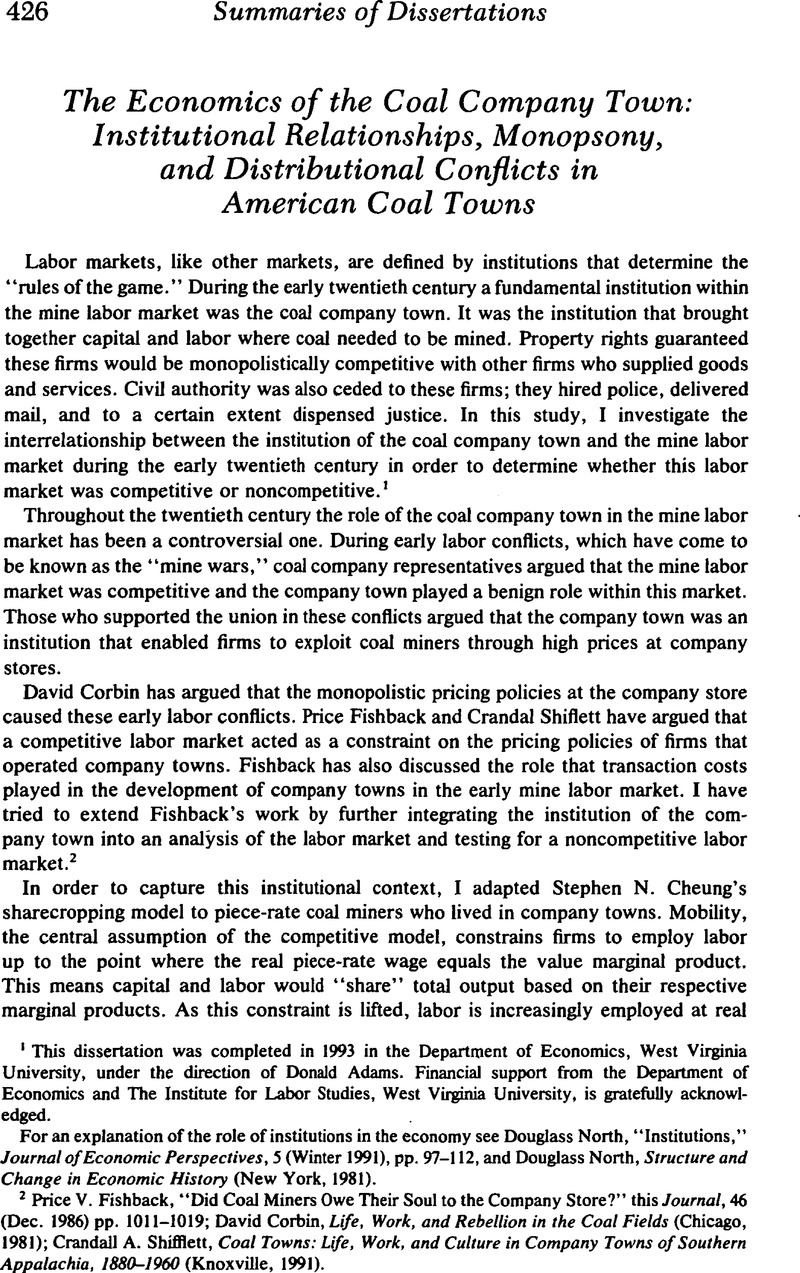Article contents
The Economics of the Coal Company Town: Institutional Relationships, Monopsony, and Distributional Conflicts in American Coal Towns
Published online by Cambridge University Press: 03 March 2009
Abstract

- Type
- Summary of Doctoral Dissertations
- Information
- Copyright
- Copyright © The Economic History Association 1994
References
1 This dissertation was completed in 1993 in the Department of Economics, West Virginia University, under the direction of Donald Adams. Financial support from the Department of Economics and The Institute for Labor Studies, West Virginia University, is gratefully acknowledged.
For an explanation of the role of institutions in the economy see North, Douglass, “Institutions,” Journal of Economic Perspectives, 5 (Winter 1991), pp. 97–112CrossRefGoogle Scholar, and North, Douglass, Structure and Change in Economic History (New York, 1981).Google Scholar
2 Fishback, Price V., “Did Coal Miners Owe Their Soul to the Company Store?” this Journal, 46 (12 1986) pp. 1011–1019Google Scholar; Corbin, David, Life, Work, and Rebellion in the Coal Fields (Chicago, 1981)Google Scholar; Shifflett, Crandall A., Coal Towns: Life, Work, and Culture in Company Towns of Southern Appalachia, 1880–1960 (Knoxville, 1991).Google Scholar
3 See Cheung, Steven N., The Theory of Share Tenancy (Chicago, 1969).Google Scholar
4 U.S. Coal Commission, Report of the United States Coal Commission (Washington, DC, 1925), vol. 5.Google Scholar
5 West Virginia Department of Mines, Annual Report (Charleston, 1901–1910).Google Scholar
- 2
- Cited by




